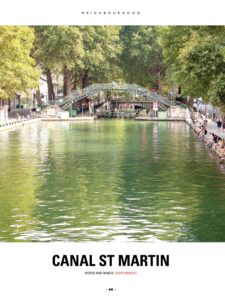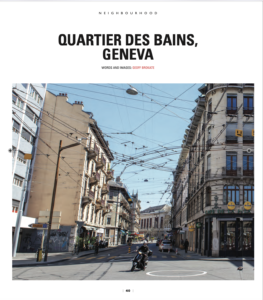Canal St Martin, Paris
When you speak to Parisians about Canal St Martin there’s a word that is commonly used to describe its newfound trendy status: ‘Bobo’, which stands for bohemian bourgeois. While its original 1802 build was to create an artificial waterway for transporting goods and fresh water, the canal holds a special place in Parisians’ hearts because it has been immortalised in some of the classics of French cinema.
The 1938 love story Hotel du Nord was set in a hotel that still exists along the edge of the water, while a more recent homage was in the 2001 film Amelie, whose main character spends her time strolling along the arched iron bridges of the canal. Director Jean-Pierre Jeunet’s film heralded a change in public perception towards Canal St Martin, inadvertently ushering in the Bobo revolution. The cafe-lined canal is now the place to be seen.
Södermalm, Stockholm
Södermalm is a southern district in central Stockholm. Considered an island, it’s nevertheless connected to surrounding areas via bridges and railways. Along with the vintage and retro styles that have been embraced on the district’s streets, there’s a visible celebration of craftsmanship and artisan skills.
It’s a delight to pass by shop windows and catch a glimpse of carpets being woven or the smell of freshly made caramels. Its success has been built upon a community spirit that supports and offers opportunities to local designers and producers.
This community spirit is also palpable in its outside spaces. Its numerous parks and green spaces are joined by a walkway that circles the island, giving 360° access to the water.
Södermalm is also known for its cliffs and hills that offer picturesque views of Stockholm’s skyline. The best vista offered is northward, overlooking Gamla Stan, the city’s beautifully preserved old town. Fast becoming one of the world’s coolest neighbourhoods, Södermalm has developed a style and identity that is based upon a contemporary reimagining and reinvention of traditional Swedish culture.
Quartier des Bains, Geneva
Although often better known for its diplomats and bankers, Geneva’s art district, Quartier des Bains, is putting the city on the map as an essential destination for international artists and collectors. A local secret for some time, the rest of the world is starting to pay attention to Europe’s very own SoHo.
Bordered to the north by the Rhone River and the Arve River to the south, Quartier des Bains, was once a working class area and you can still find traces of its history as you pass its restored workshops and factories, reinvented as imposing art galleries.
In 2004 three gallery owners, who were struggling to tempt artists of international standing to exhibit in the city, established the Quartier Des Bains Association. Now the area has been reinvigorated and is home to 20 bustling galleries and six huge cultural institutions. The boutiques of the area strive to break down barriers between art, life, design, entertainment, relaxation and even grooming by creating an all-encompassing space where disciplines and activities overlap and feed into each other.
Specially designed furniture folds up and wheels away so that salons can be transformed into catwalk runways, while painters create in working studios that are woven into the life and soul of shop floors.


